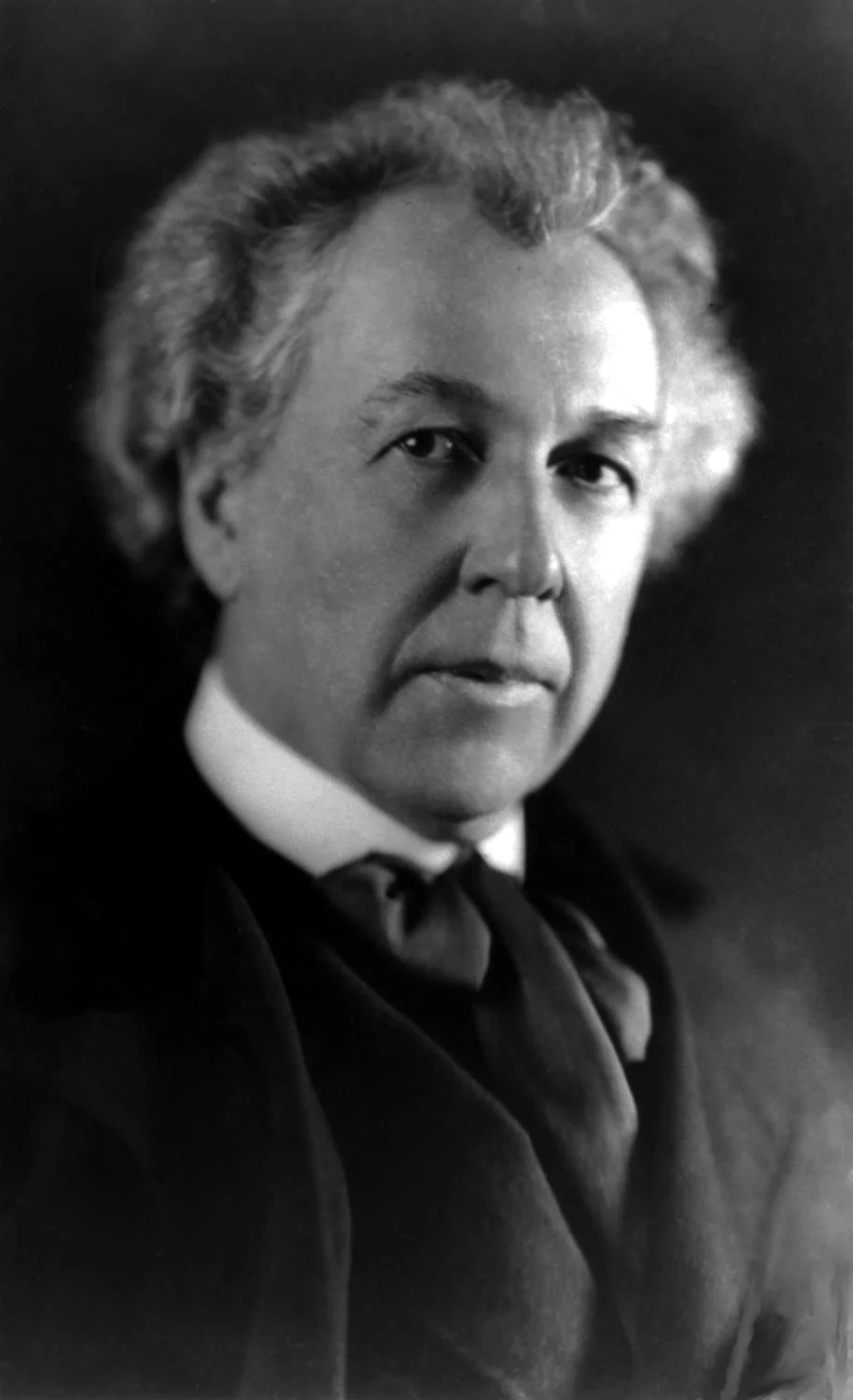Frank Lloyd Wright is a name synonymous with innovation, creativity, and a deep respect for nature. As one of the most influential architects of the 20th century, Wright didn’t just design buildings—he redefined how we think about space, form, and the relationship between humans and their environment. From the iconic Fallingwater to the revolutionary Usonian homes, Wright’s work continues to inspire architects and homeowners alike. But who was Frank Lloyd Wright, and how did he transform the world of architecture? Let’s explore the life, philosophy, and enduring legacy of this visionary genius.
Early Life: A Boy with Big Dreams
Frank Lloyd Wright was born on June 8, 1867, in Richland Center, Wisconsin. From an early age, he was fascinated by nature, spending hours exploring the rolling hills and forests of his rural hometown. His mother, Anna, believed in his potential and filled his nursery with Froebel blocks, educational toys that encouraged creativity and spatial thinking. These blocks would later influence Wright’s architectural style, particularly his love for geometric shapes and modular designs.
Wright’s childhood was not without hardship. His parents divorced when he was young, and the family struggled financially. But these challenges only fueled his determination to create something extraordinary.
Apprenticeship with Louis Sullivan: The Formative Years
In 1887, Wright moved to Chicago, where he began working for the renowned architect Louis Sullivan, often called the “Father of Skyscrapers.” Sullivan’s philosophy, “Form follows function,” deeply influenced Wright. Under Sullivan’s mentorship, Wright learned the importance of designing buildings that were not only beautiful but also practical.
However, Wright’s ambition soon outgrew his role as an apprentice. In 1893, he left Sullivan’s firm to establish his own practice, setting the stage for a career that would redefine modern architecture.
Breaking Away: Wright’s Independent Practice
Wright’s early work was marked by a desire to break free from traditional European styles. He sought to create a uniquely American architecture, one that reflected the vast landscapes and democratic ideals of the United States. This led to the development of the Prairie Style, characterized by low, horizontal lines, overhanging eaves, and open floor plans.
The Prairie Style was a radical departure from the ornate, vertical designs of the Victorian era. Wright believed that homes should blend seamlessly with their surroundings, creating a sense of harmony between the built environment and nature.
The Prairie Style: Redefining American Homes
The Prairie Style became Wright’s signature, and its influence can be seen in some of his most iconic works. The Robie House in Chicago, completed in 1910, is a masterpiece of the Prairie Style. Its long, horizontal lines and open interior spaces create a sense of flow and connection to the outdoors.
Another notable example is Unity Temple in Oak Park, Illinois. Designed as a Unitarian Universalist church, Unity Temple features clean lines, natural light, and a focus on functionality. It’s considered one of the first modern buildings in the world.
Taliesin: A Home and a Tragedy
In 1911, Wright built Taliesin, his personal home and studio in Spring Green, Wisconsin. The name, which means “shining brow” in Welsh, reflects Wright’s desire to integrate the building with the landscape. Taliesin was more than a home—it was a living experiment in organic architecture.
But tragedy struck in 1914, when a disgruntled servant set fire to Taliesin, killing Wright’s mistress, Mamah Borthwick, and six others. Despite this devastating loss, Wright rebuilt Taliesin, determined to continue his work.
Fallingwater: A Masterpiece in Harmony with Nature
In 1935, Wright was commissioned to design a weekend home for the Kaufmann family in rural Pennsylvania. The result was Fallingwater, one of the most famous buildings in the world.
Fallingwater is built directly over a waterfall, with cantilevered balconies that seem to float above the rushing water. Wright’s design blurs the line between indoors and outdoors, creating a sense of unity with nature. Today, Fallingwater is a UNESCO World Heritage Site and a symbol of Wright’s genius.
Organic Architecture: Wright’s Guiding Philosophy
At the heart of Wright’s work was the concept of organic architecture. He believed that buildings should be in harmony with their environment, using natural materials and forms to create a sense of unity.
Wright once said, “No house should ever be on a hill or on anything. It should be of the hill. Belonging to it.” This philosophy is evident in all his designs, from the sweeping curves of the Guggenheim Museum to the simplicity of his Usonian homes.
The Usonian Homes: Affordable Architecture for the American Middle Class
During the Great Depression, Wright turned his attention to designing affordable homes for the American middle class. He called these homes Usonian, a term he coined to describe his vision for a uniquely American style of architecture.
Usonian homes were small, efficient, and designed to be built on a budget. They featured flat roofs, radiant heating, and open floor plans, creating a sense of spaciousness despite their modest size. Wright believed that everyone deserved access to beautiful, functional design, and the Usonian homes were his way of making that vision a reality.
Taliesin West: A Desert Laboratory
In 1937, Wright built Taliesin West in Scottsdale, Arizona, as his winter home and studio. The design reflects the harsh beauty of the desert landscape, with angular walls made of local stone and canvas roofs that let in natural light.
Taliesin West was more than a home—it was a laboratory where Wright and his apprentices experimented with new ideas and materials. Today, it’s the headquarters of the Frank Lloyd Wright Foundation and a testament to his enduring legacy.
The Guggenheim Museum: A Spiral in the City
One of Wright’s most ambitious projects was the Solomon R. Guggenheim Museum in New York City. Completed in 1959, six months after Wright’s death, the museum is a spiral-shaped structure that defies traditional architectural norms.
The Guggenheim’s design was controversial, with critics calling it impractical and even “a war against architecture.” But today, it’s celebrated as a masterpiece of modern design, a building that challenges our expectations and invites us to see the world in new ways.
Wright’s Personal Life: Scandals and Resilience
Wright’s personal life was as dramatic as his architecture. He married three times and had numerous affairs, often causing scandal and controversy. His first marriage ended in divorce after he left his wife and children for Mamah Borthwick, a client’s wife.
Despite these challenges, Wright remained dedicated to his work, using his personal struggles as fuel for his creativity.
Wright’s Rivalries: Clashing with the Architectural Establishment
Wright was never one to follow the rules, and his rebellious nature often put him at odds with the architectural establishment. He had a contentious relationship with the American Institute of Architects, which he accused of being too conservative and resistant to change.
But Wright’s willingness to challenge the status quo is what made him a pioneer. He wasn’t afraid to take risks, and his boldness paid off in the form of some of the most iconic buildings in history.
The Legacy of Fallingwater: A UNESCO World Heritage Site
Fallingwater is more than a building—it’s a symbol of Wright’s genius and his ability to create harmony between architecture and nature. In 2019, it was designated a UNESCO World Heritage Site, along with seven other Wright-designed buildings.
This recognition ensures that Wright’s work will be preserved for future generations, inspiring architects and dreamers for years to come.
Wright’s Influence on Modern Design
Wright’s ideas continue to shape the world of architecture. His emphasis on organic design and sustainability has inspired architects like Richard Neutra, Eero Saarinen, and Tadao Ando.
In an era of climate change and environmental crisis, Wright’s philosophy feels more relevant than ever. His belief in the importance of harmony between humans and nature is a lesson we can all learn from.
Wright’s Unbuilt Projects: Dreams That Never Came to Life
Not all of Wright’s designs were realized. Some, like the Mile-High Illinois skyscraper, were too ambitious for their time. Others, like the Broadacre City urban planning project, were visionary but impractical.
These unbuilt projects remind us that Wright was always looking to the future, pushing the boundaries of what architecture could be.
Wright’s Writing and Philosophy: Sharing His Vision
Wright was not only a brilliant architect but also a prolific writer. Books like “The Natural House” and “An Autobiography” offer insights into his philosophy and creative process.
Through his writing, Wright sought to share his vision with the world, inspiring others to think differently about design and the built environment.
Frank Lloyd Wright Today: Preserving His Legacy
The Frank Lloyd Wright Foundation works tirelessly to preserve Wright’s buildings and promote his ideas. From restoring Taliesin to educating the next generation of architects, the foundation ensures that Wright’s legacy lives on.
Visiting Wright’s Masterpieces: A Traveler’s Guide
If you’re a fan of Wright’s work, there are plenty of places to visit. Fallingwater, Taliesin, and the Guggenheim Museum are must-see destinations. For a quieter experience, check out some of his lesser-known works, like the Dana-Thomas House in Illinois or the Hollyhock House in Los Angeles.
Conclusion: Why Wright’s Vision Endures
Frank Lloyd Wright was more than an architect—he was a visionary who changed the way we think about space, form, and our relationship with nature. His work continues to inspire and challenge us, reminding us that architecture is not just about buildings but about creating a better world.
As Wright once said, “The mother art is architecture. Without an architecture of our own, we have no soul of our own civilization.” His soul lives on in the buildings he left behind, a testament to the power of creativity and imagination.
FAQs:
- What is organic architecture?
- Organic architecture is a design philosophy that emphasizes harmony between buildings and nature. It seeks to create structures that are integrated with their surroundings, both visually and functionally.
- What is Frank Lloyd Wright’s most famous building?
- Frank Lloyd Wright’s most famous building is Fallingwater, a house built over a waterfall in Pennsylvania. It is considered a prime example of organic architecture.
- What are Usonian homes?
- Usonian homes were affordable, efficient homes designed by Frank Lloyd Wright for the American middle class. They were typically one-story, with open floor plans and flat roofs.
- How many buildings did Frank Lloyd Wright design?
- Frank Lloyd Wright designed over 1,000 buildings, with approximately 500 of them completed. His work spanned a variety of styles, but he is best known for his Prairie School and organic architecture designs.



